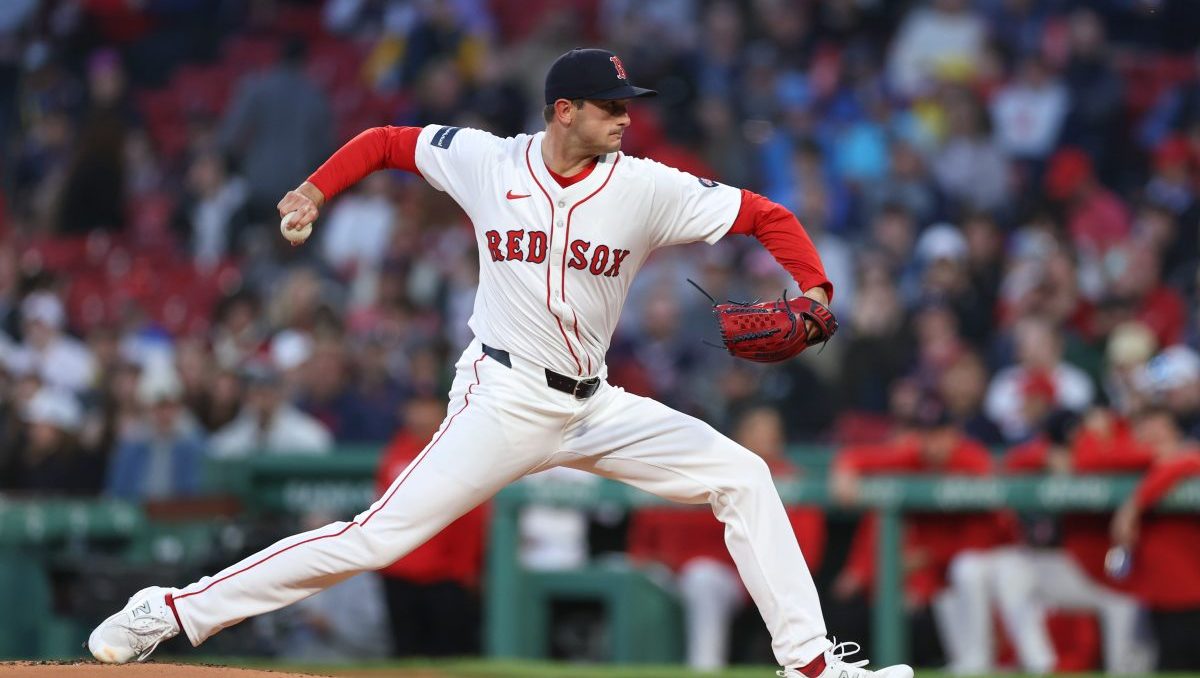The term "opener" obscures the most important pitcher in the entire process. It's actually the "follower."
When the Rays popularized the concept in 2018, they recognized it would only be as strong as whoever pitched second. In most cases, the opener himself wouldn't even turn over the lineup.
In 2019, for instance, Ryne Stanek started 27 games and threw only 55.2 innings before being traded to the Marlins at the deadline. A year earlier, right-hander Diego Castillo made 11 starts totaling 19 innings.
The real work, it turns out, comes next.
LIVE stream the Celtics all season and get the latest news and analysis on all of your teams from NBC Sports Boston by downloading the My Teams App.
In 2018, right-hander Ryan Yarbrough won 16 games and threw 147.1 innings in 38 appearances (six starts). Last season, former Red Sox farmhand Jalen Beeks threw over 100 innings despite making just three starts, while Yarbrough once again topped 140 innings in 28 appearances split evenly between starting and relieving.
What makes this relevant to the Red Sox, of course, is dire necessity. With ace Chris Sale already ruled out for Opening Day, and with nary a fifth starter in sight, the Red Sox could devote a pair of rotation spots to openers in April.
The Rays used the system to much acclaim last season, leading the AL in ERA at 3.65, more than a full run better than the Red Sox, despite injuries that limited defending Cy Young Award winner Blake Snell to 23 starts and breakout candidate Tyler Glasnow to 12.
On Sunday, chief baseball officer Chaim Bloom conducted a seminar with the coaching staff over the implementation of the opener, since he spent 15 years in Tampa and helped pioneer its use. Roenicke told reporters in Florida that Bloom's primary message was that one size does not fit all.
Boston Red Sox
"There isn't a set way to do things," Roenicke said. "You have to look at who you're playing that day, who you match up against, whether you know a guy is going to pitch that day and you communicate with him that he's going to pitch, you're not sure yet whether he's going to start or come in and relieve. And there's different reasons why you would change that.
It has to do with what happens the day before, it has to do with what the matchup is that day, the lineup against you, so it's really you've got to be really flexible in how you go about it and from game to game.
The issue for the Red Sox will be finding the arms to make it work. Starting a traditional reliever may work to a platoon advantage — the Rays allowed the fewest first-inning runs (67) in the AL in 2018, dropping to sixth (86) last year — but it's the innings-eater in the middle of the game who needs to bridge the gap to the setup men in the sixth or seventh.
The problem is, were that pitcher accomplished enough, he'd simply be a starter. Even the Rays have admitted that in a perfect world, they'd just field a set rotation.
The opener is what happens when you don't quite have the arms to pull that off, since it allows the "follower" to avoid the top of the order right out of the gate, and also limits, in theory, the possibility that he'll face those hitters three times.
"I think it's the personnel," Roenicke said. "If your personnel really fits this opener-type thing, it makes sense. It makes a lot of sense. But if you have a stud fourth or fifth starter, you do it the other way."
With the Red Sox likely carrying 13 pitchers on Opening Day, they'll have some spots to play with.
The safest bets to make the roster, as things stand now, are starters Eduardo Rodriguez, Nathan Eovaldi, and Martin Perez, as well as closer Brandon Workman, and relievers Matt Barnes, Darwinzon Hernandez, Heath Hembree, Josh Taylor, and Marcus Walden.
That leaves four spots and multiple candidates to open, whether it's 30-year-old right-hander Chris Mazza, who made his debut with the Mets last season after eight years in the minors, 27-year-old left-hander Kyle Hart, a 2016 19th-round pick who only throws in the upper 80s but boasts decent command, or old friends Ryan Weber and Brian Johnson, a pair of soft tossers the organization knows well.
While it's entirely possible one or more of them thrive in the role, it's probably more likely that the organization's lack of pitching depth shows up in this arena, too. After all, it's not as if the simple act of employing an opener guarantees its success.
You need the horses, especially in those middle innings, and it's hard to say the Red Sox have them.


